Reasons why potatoes grow poorly in the garden and what to do
Experts identify several reasons why potatoes can grow poorly and what to do with it, they offer ways to solve problems. Unfavorable factors can be weather conditions, incorrectly selected variety, unsuitable soil composition. Vegetable growers often make mistakes in caring for a vegetable crop. To rectify the situation, you need to determine the cause in time and start a fight to eliminate it.
The reasons
There are several reasons why potatoes do not grow after planting, therefore, knowing in advance about the unfavorable factors, you can prevent the development of problems:
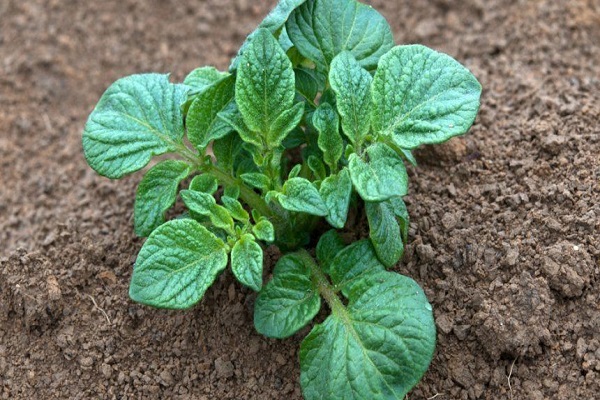
- Potato varieties are divided into three large groups according to the ripening period of root crops: early, mid-ripening and late-ripening. Agronomists recommend planting varieties of different time groups.
- Do not plant both early and late potatoes at the same time.
- Poor quality planting material.
- Failure to comply with crop rotation, lack of timely fertilizing, improperly prepared land.
- Planting too deep leads to the fact that seedlings may not appear at all. Seeding depth approx. 8 cm.
Weather conditions play an important role. Heavy rains, return of frost, low air temperature or, conversely, hot days, also cause poor plant development. Diseases and pests significantly impair the quality and quantity of the crop.
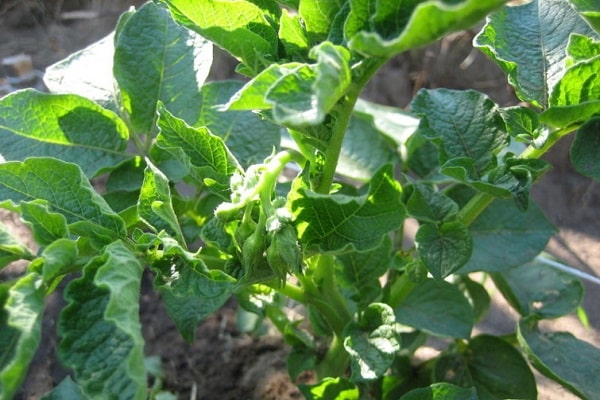
Varieties
In order for root crops to grow large and with high taste, you need to choose the right variety. You need to take into account the climate, soil composition, the purpose of the crop.
By the timing of the ripening of the crop, there are:
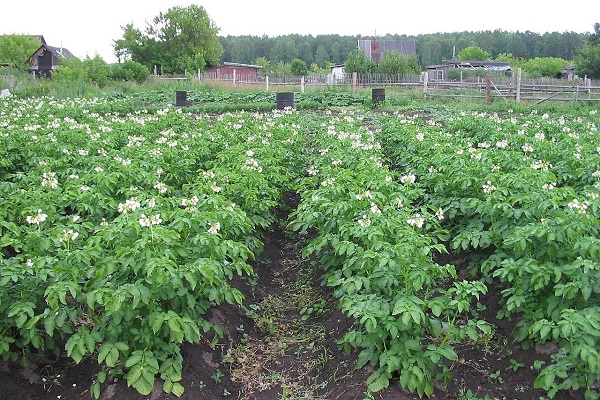
- super early varieties that allow you to harvest after 40–45 days, so you can get two harvests per season;
- in early potatoes, the ripening boundaries of fruits are equal to 50-60 days;
- the mid-early group of vegetable crops begins to ripen after 80 days;
- root crops of medium late varieties after planting ripen in 95–100 days;
- late potatoes can be harvested in 110–120 days.
Depending on the type of potato, the flesh can be white, yellow, purple, red. The shape of the potato is round, oblong, cylindrical.In addition to these indicators, attention is paid to the main characteristics of the variety: yield, resistance to cold and drought, resistance to diseases and pests.
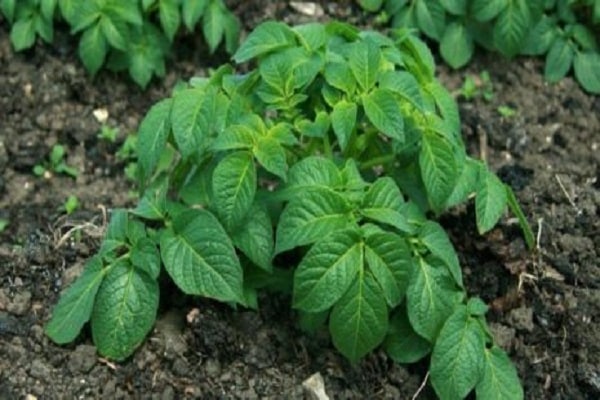
No suitable variety
Among the large number of varieties, there is a suitable variety that adapts to climatic characteristics, soil composition, individual preferences.
For some, yield is extremely important, for others it is necessary that the potatoes boil during cooking. You can find varieties that will feel great in sandy and clay soils, they will tolerate drought and cold well.
Experts in vegetable growing recommend planting different varieties of potatoes, which will surely allow you to harvest a good harvest of root crops.
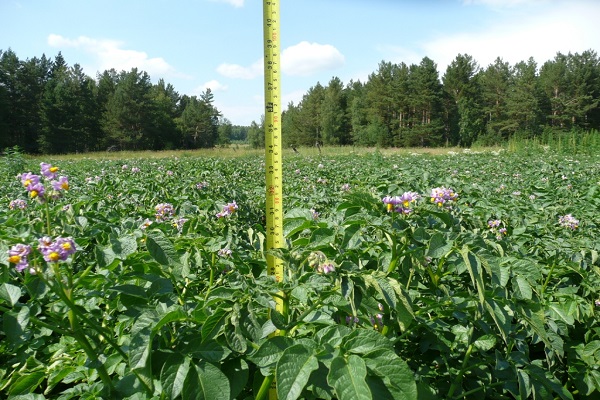
Poor quality seeds for planting
The planting material is selected and carefully examined. Suitable for planting are medium-sized potatoes (weight 80 g), without damage, stains and rot. Damaged seeds should not be left for propagation, otherwise there will be poor germination, low yield and a high risk of developing diseases.
The selected planting material is stored in a separate container. The room should be cool, about +2 degrees.
Tubers of any kind of potato disinfected before planting. For this purpose, the seeds are placed in a weak solution of potassium permanganate for 30 minutes; copper sulfate can be added to the composition.
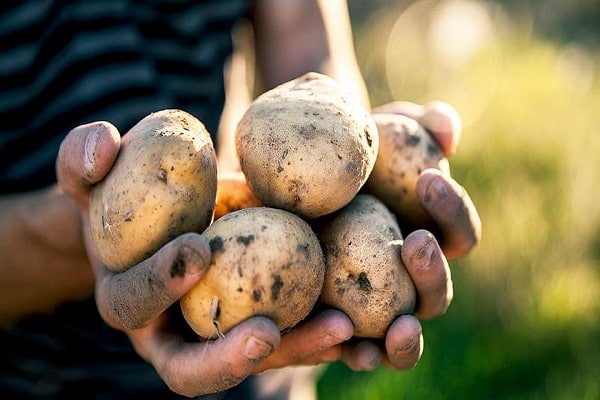
Without germination, seedlings will appear slowly, the yield will be low. The most common germination method is light germination. The planting material is distributed on the surface in one layer, the room temperature should be +8 degrees. In this state, they are left until sprouts 1 cm long appear. The potatoes are periodically turned over.
Planting several varieties at the same time
It happens that the variety is selected in accordance with climatic conditions, planting rules are followed, but the vegetable does not grow. The reason may be that all varieties were planted on the same day. It is not right.

Early-ripening potatoes are planted in the spring before everyone else, as they are not afraid of a cold snap. Varieties with average fruit ripening limits begin to be planted when the air temperature warms up to +13 degrees. Late varieties are planted last when the temperature settles at around +21 degrees.
The method for planting different potato seeds might look like this. On the prepared plot of land, furrows are made, into which, first, early varieties are planted, then medium early and late ones.
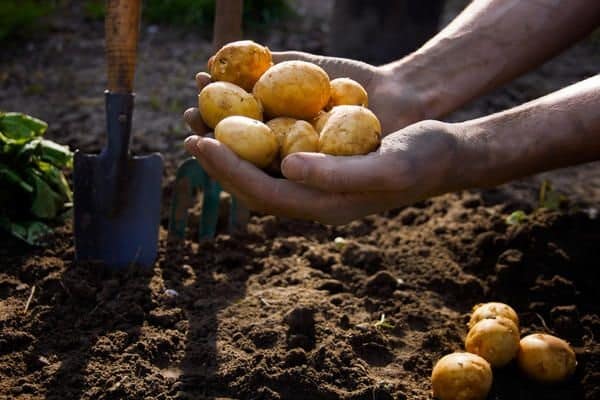
Landing
One of the main reasons why potatoes do not grow in the garden is poor soil. The vegetable develops best in light, fertile, well-aerated soil.
Ground with high acidity is categorically not suitable. It is not advisable to choose an area where groundwater passes too close to the surface. Tubers will form small with low palatability.
The soil is prepared in advance before planting potatoes. Since autumn, the site is dug to a depth of 30 cm and fertilizers are applied. Rotted manure and humus, superphosphate and potassium nitrate are best suited. If the soil is acidic, add dolomite flour or wood ash.
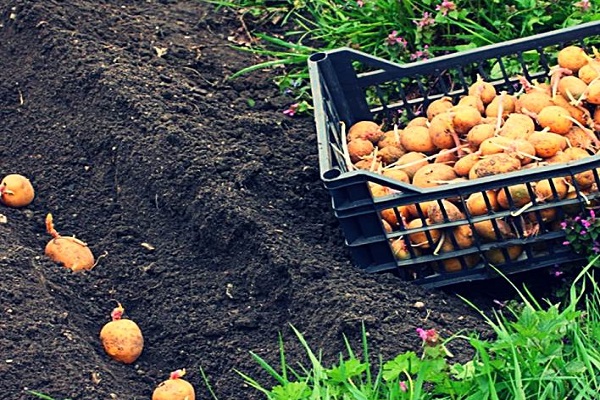
Lack of crop rotation
Every year, the soil gives the plants a lot of nutrients and, as a result, is depleted, therefore it is not recommended to plant potatoes in the same place for several years in a row. In addition, bacteria and pests accumulate in the soil.
The best neighbors for potatoes are corn, sorrel, and onions. Good predecessors are cabbage, cucumber, beets, rye. Potatoes develop poorly after crops such as sunflowers, eggplant and tomatoes.
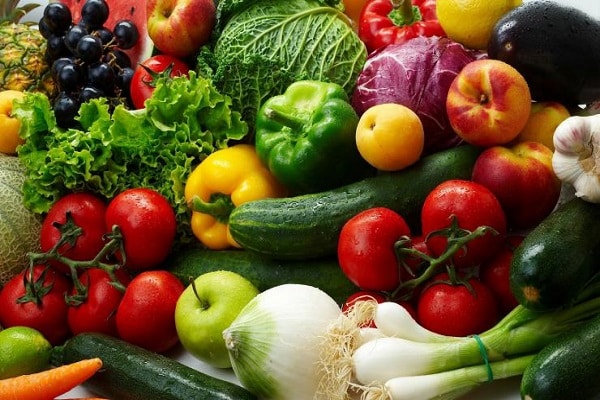
Depleted soil
For 3-4 years of constant cultivation of potatoes in the same area, the soil is depleted, so fertilization is required.
In autumn, humus, superphosphate, potassium sulfate are introduced. If the soil is acidic, then liming is carried out. It is useful to fertilize any soil with wood ash. It contains many trace elements (phosphorus, potassium, calcium). 10 sq. m requires 8 kg of wood ash.

During spring plowing of the land, it is recommended to add superphosphate, compost, manure infusion, embedding the components to a depth of 12 cm. Fresh manure must not be introduced. It reduces the palatability of potatoes, the fruits become watery. In addition, the risk of contracting fungal diseases increases.
It is recommended to apply nitrogen fertilizers during the spring preparation of the soil for planting, as well as before the first hilling potatoes.
During the entire growing season, it is useful to carry out root and foliar dressing. The main components of the solutions can be poultry droppings, cow dung, urea, grasses.
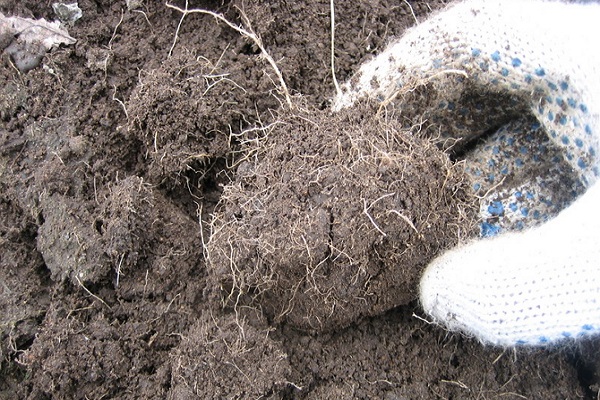
Deep landing
If the potatoes are planted too deeply, the seedlings will emerge slowly and later than usual. This is due to the poor supply of heat and oxygen from the surface of the earth. In this case, the sprouts will be weak, the yield will decrease.
Potatoes can be planted in a hole 5 to 11 cm deep. The lighter the soil, the deeper the seed placement depth. The optimal hole depth is considered to be 8 cm. At the same time, it is useful to fertilize the soil. During planting, a mixture of humus, wood ash and superphosphate is laid in each hole.
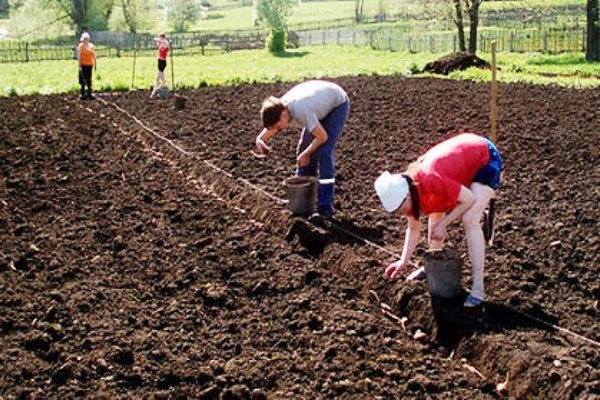
Inappropriate landing method
There are many ways to plant potatoes. When choosing, first of all, you need to consider the composition of the soil. The most popular planting method is the smooth method. In the pre-prepared furrows, recesses are made into which the planting material is placed and covered with earth.
Other known methods of planting vegetable crops are as follows.
- If the soil is light, sandy is the trench option. Dig trenches 13 cm deep at a distance of 73 cm. Since autumn, rotted manure, sawdust or straw are placed in the prepared trenches. Over the winter, they will decompose and warm the soil. In the spring, potatoes are laid in trenches at intervals of 40 cm.With this method, planting can be done two weeks earlier.
- If the soil is heavy and wet, a ridge planting method is ideal. The height of the embankment can be more than 15 cm.
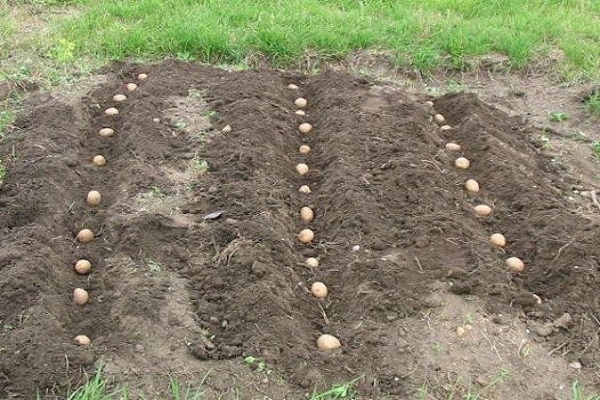
For the entire growing season, it is recommended to water three times: two weeks after planting, during flowering, and three weeks before harvest. Hilling and weeding are important points in crop care. Hilling is carried out immediately after the emergence of the first shoots, and the second time before flowering.
Growth
It is customary to distinguish five periods of growth in potatoes:

- Tuber germination and emergence of the first shoots.
- The appearance of a green stem with the first leaves.
- Bud formation and the beginning of the flowering period.
- Active flowering and cessation of the growth of tops.
- Drying of the tops and the final formation of root crops.
Potato growth may stop at any of these stages. The reason is improper care, the return of frost, rainy or dry weather, an invasion of pests, infection with infections.
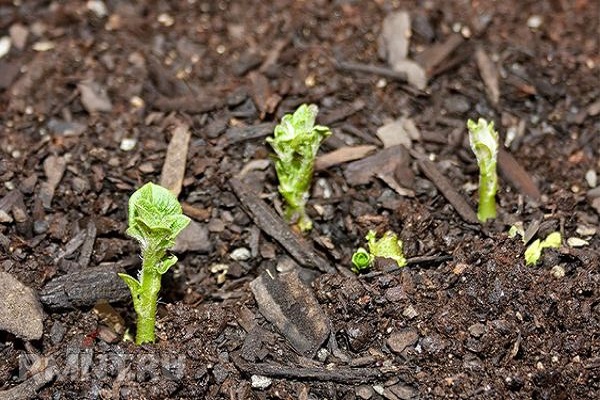
How many potatoes grow
The first young seedlings, under warm weather conditions, begin to appear in 23 days. If the weather stays at + 20 degrees for a long time, then the first shoots appear already on the 16th day. The germination time is delayed due to cold weather.
Need to plant potatoes in the heated soil (+10 degrees) and shallow, in the topsoil, it is best to germinate the planting material first.
Seedlings may appear unevenly due to different seeding depths, different sizes of tubers, when choosing potato varieties with different ripening periods.

Climate and landing dates
The time of planting potatoes is determined according to some criteria: air temperature, soil moisture level (too wet soil leads to decay of planting material, and not germination), the selected variety.
Sometimes potato bushes do not develop due to non-compliance with planting dates. Most often, planting work begins in early May, but it is better to focus on weather conditions.
The soil should warm up to 8-10 degrees to a depth of 10 cm. By this time, the risk of frost return is minimal. In regions with different climatic conditions, the soil warms up at different times.

Why did potatoes stop growing?
The growth of tubers and the ground part of the vegetable crop can stop due to bad weather, poor maintenance, lack of nutritional components, as well as as a result of pest attacks. Potatoes stop growing in hot weather, in the absence of regular watering.

What to do if potatoes do not sprout?
If the potato shoots have not appeared by the estimated, calculated date, then measures must be taken:
- First and foremost make sure the potatoes are not planted too deeply. It is enough to dig in a few tubers and see. If so, then germination will take 7-10 days.
- If the weather is warm and dry, then watering will help speed up the germination of seeds.
- It is worse if the sprouts did not appear due to rotting tubers or damage by pests. In this case, all the planting material is dug up and burned, the land plot must be treated with fungicides.
In the infected area, it is better to plant another crop that is immune to potato diseases... In another area, you can plant early varieties of potatoes and have time to collect a rich harvest.
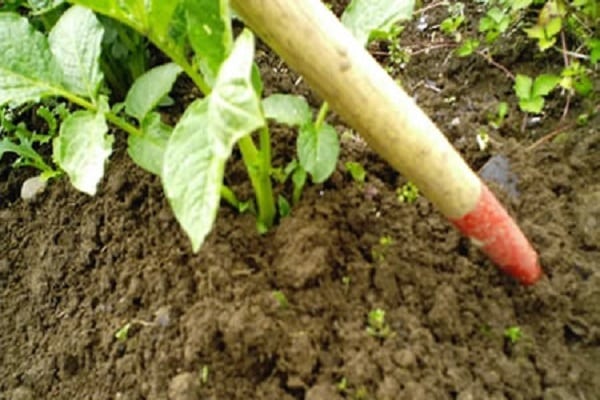
Harvest
Growing potatoes is not difficult, but some unfavorable conditions can reduce yields:
- too cold or hot weather;
- dense planting;
- lack of moisture, especially during flowering;
- lack of air in the soil;
- excess or lack of nutritional components;
- lack of light.
The yield may decrease, and the tubers lose their taste and appearance or are not fully formed.
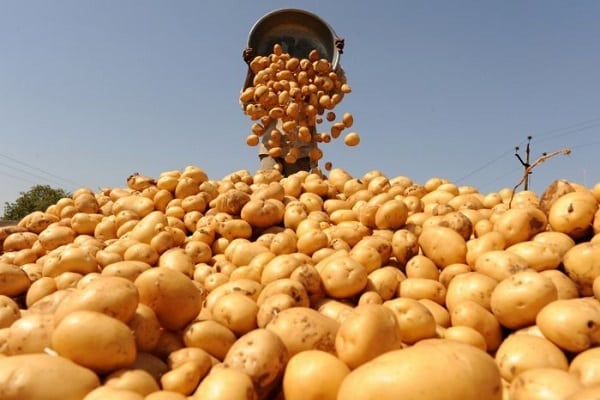
Small fruits
A small potato crop can be formed due to many unfavorable factors:
- A common cause is a fungal disease - late blight. When the bushes are damaged, the tubers do not rot, but only stop their growth.
- An excess of nitrogen leads to the active development of green mass. All nutrients go up, root crops develop poorly.
- High air temperature. If the heat came during the period of active growth of root crops, then their growth stops. Even if the temperature drops soon, the tubers will be small.
- Lack of moisture also causes a small harvest.
Regular watering in hot weather, adherence to the dosage when applying fertilizers, preventive treatments against diseases and pests, will help to collect a large and tasty harvest.

Rotten fruit
The potato crop can rot. The reason is wet, rainy weather, too densely planted bushes, fungal or bacterial infections.
If dry and yellow tops appear among the green bushes of potatoes, some kind of disease is most likely developing. Potato rot can be caused by: late blight, fusarium, black leg, ring rot. Sick bushes are dug up and burned.
Another reason for rotting tubers during growth is an excess of nitrogen in the soil. Voids form inside the tubers and the pulp begins to rot. The next year, you need to reduce the application of nitrogen, and increase the potassium.

Little ovary and fruit
Few ovaries and fruits are formed due to hot weather and dry air. In this case, the ovaries fall off. The bushes look sluggish, emaciated, the tubers are few and they are small.In this case, you need to water the area with water and treat it with Zircon.
If the stem is even, the leaves are green, in general the bush looks healthy, and there are no ovaries, then this will not affect the quality and quantity of the crop. You also need to know that not all varieties are capable of blooming.

Diseases and pests
Diseases and pests can significantly worsen the condition of the bushes and reduce yields. The vegetable slows down and stops developing. The disease can be provoked by viruses, bacteria and fungi that penetrate into the plant through leaves, roots, damage.
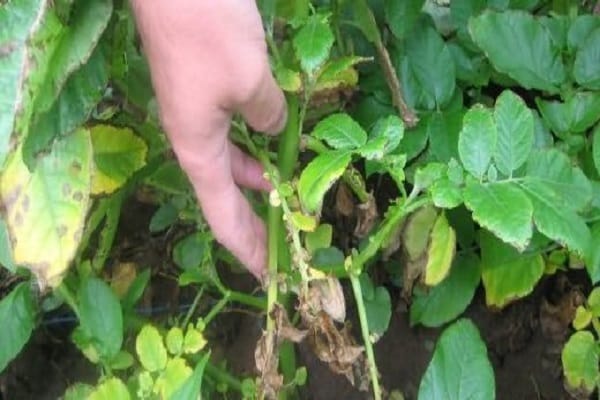
Fungal diseases of potatoes
Spores of fungal infections are spread by wind, insects, water. Under favorable conditions for them (cold weather and high humidity), fungi begin to multiply actively, spreading over large areas.
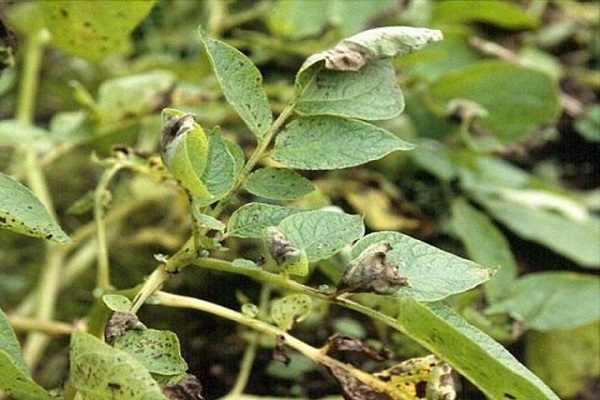
Potato viral diseases
The most common viral disease is mosaic, which has three varieties. The reason is a decrease in plant immunity due to improper watering, lack of nutrients in the soil, damage to bushes by pests.
The leaves of the plant curl, change color, light brown blotches appear. Over time, the stem is damaged, and the leaves become completely yellow, dry and begin to fall off.

Potato bacterial diseases
Throughout the growing season, a bacterial infection may appear. The most common source of infection is seed. Rot that infects tubers is especially dangerous, and they become unsuitable for food.
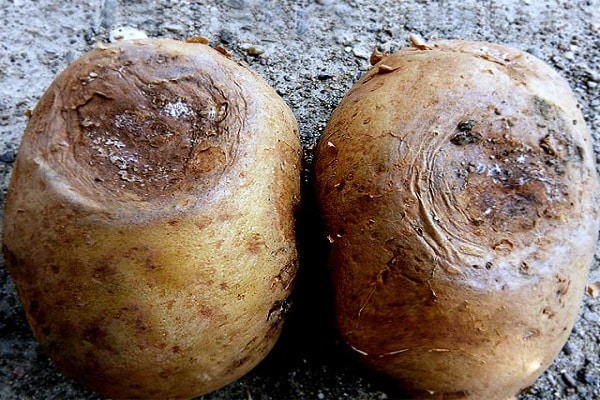
Potato late blight
The first sign of late blight is the appearance of brown spots on the top of the leaves. The inner half of the leaf plate is covered with white bloom. If you do not start treatment, then in a month all potato plantings will be infected with the disease. The leaves turn brown and the tubers are also affected. Over time, the tops become thinner, rot, wither and dry out. For a month, every week it is recommended to process the bushes with Bordeaux liquid.
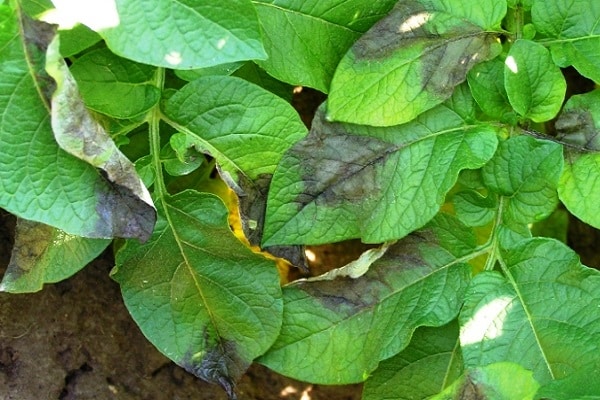
Dry rot of potatoes
Dry rot or fusarium is a fungal disease that, during growth, affects the ground part of the plant. It develops on tubers most often during storage. Spreading begins in dry, hot weather.
With fusarium, the leaves change color. Their edges turn brownish-purple, and the top begins to lighten. Gradually, the leaves wither, the stem darkens, brown spots appear on the fruits, covered with a white-gray bloom.
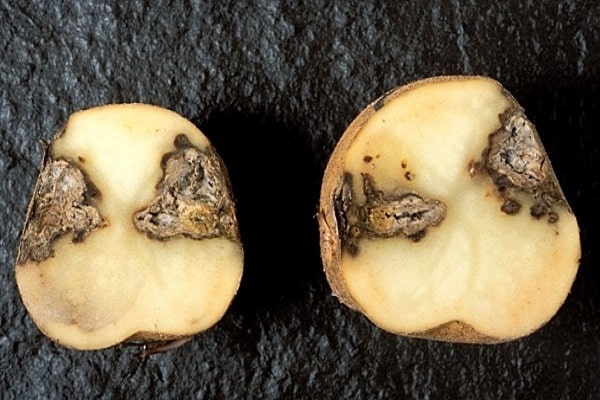
Black leg of potato
The black leg can ruin the entire potato crop. The stem and roots begin to rot, the leaves curl, become tough. The tubers become soft and have an unpleasant odor. Rot can develop both from the inside of the fruit and from the outside. A preventive measure is the treatment of seed with special preparations.

Ring rot of potatoes
Ring rot is a common bacterial infection. It is problematic to notice the disease at the initial stage. When the leaves and tops begin to wither, the plant is already infected from the inside.
In the veins of the leaves, the sap becomes yellow-brown, which indicates the process of decay. Putrid rings and spots are visible not only on the surface of the tubers, but also inside, when cut. The damaged part of the potato fills with an oily liquid, which turns brown over time.
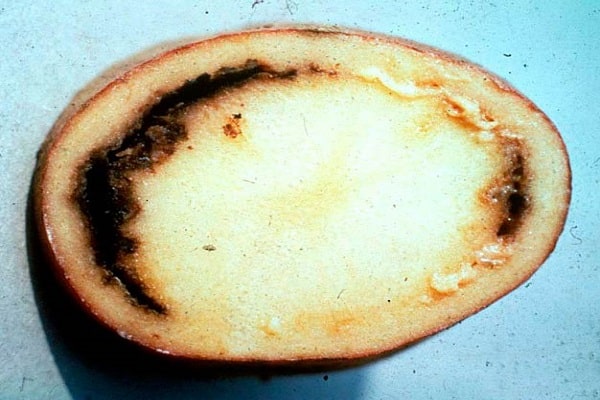
Medvedka
Adult insects (up to 6 cm in length) and bear larvae cause significant damage in vegetable beds. They damage the roots and stem of potato bushes, gnaw through root crops. In the fight against the bear, they use folk methods and chemicals (Prestige, Aktara, Masterpiece).

Colorado beetle
The Colorado potato beetle feeds on the leaves of nightshade crops, but prefers potatoes the most.It eats leaf petioles, but does not touch flowers, stems and roots. If you do not take action, the plant will stop developing, and the tubers will be small.
From the Colorado potato beetle, they use such means as Confidor, Regent, Commander. You should not allow the appearance of weeds, it is imperative to observe crop rotation, it is important to plant planting material on time and remove all plant residues from the site after harvesting.
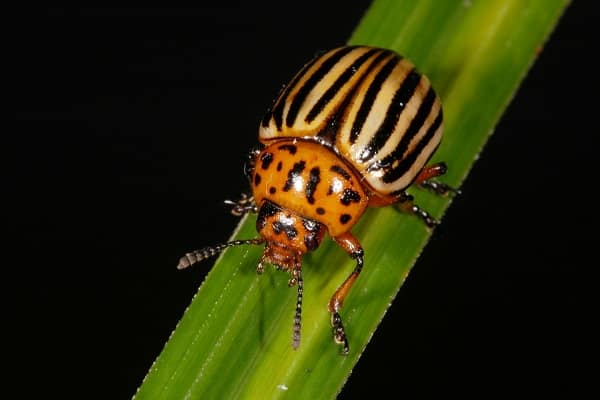


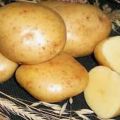
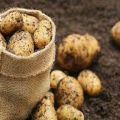
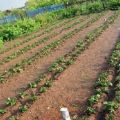



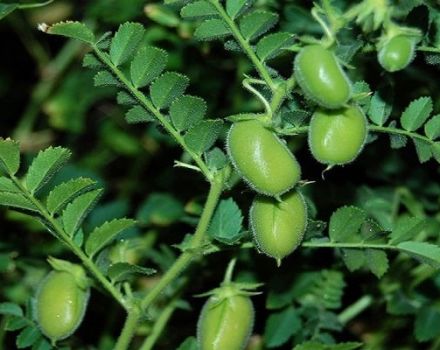

The reasons can be completely different. In any case, the soil and seedlings must be constantly fed. I always have a means for these purposes "BioGrow". Such a bioactivator costs quite a bit.